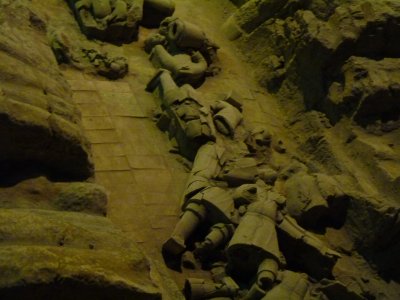
A whole army of terracotta soldiers discovered in about 1974.
Emperor Qinshihuang reigned around 200 BC. It was he who first unified China after defeating 7 adjacent kingdoms from his base in Shaanxi.
Unification involved standardising money, measurements, script, and no doubt a few other things. Must have read the "how to unify a kingdom" manual.
He was also reputedly oppressive and ruthless. Of the 700,000 involved in building his tomb, yet to be really found and excavated, apparently few survived.
Apart from the terracotta army, designed to protect him in the afterlife, he was also responsible for the first great wall.
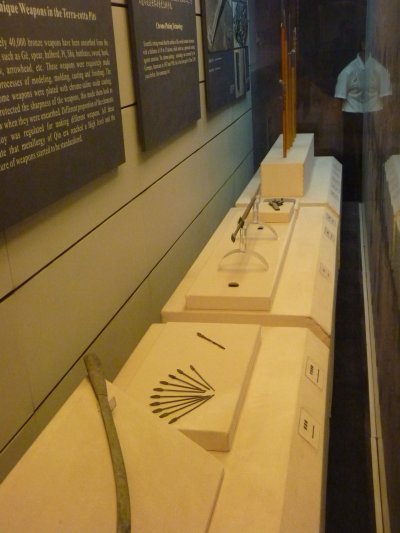
Mostly bronze. Long (swords), short, and long range (bows) weapons.
Being a metallurgist I couldn't help but notice the description of chrome plating and the almost triumphant sounding note that it hadn't been invented in the west until 1930 (and US in 1950).
There have been several explanations for the presence of chrome in the very thin (a few microns) surface layer of the bronze swords. One is its deliberately deposited from some sort of solution treatment. Another is that its a tramp element in the bronze that migrated to the surface during fires that destroyed the pits.
Either way, its a far cry from the electrochemical chrome plating developed in the 1930's - unless ancient China had electricity that is ....
The bronze swords have a higher tin content than other bronze. Helps the corrosion resistance a bit.
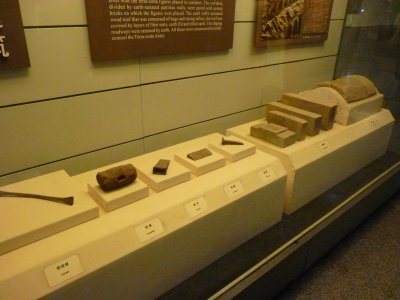
The photo is of some of the bits, including an iron nail (forged in a similar way to which I first observed in 19th century railway nails).
The sections of the pits are separated by thick earth rammed walls. The floor is terracotta tiles, upon which the warriors and horses stand.
Over the warriors, between the walls, are heavy wood beams forming the roof.
Above the beams was matting then soil.
There were also rammed earth ramps down which the warriors were carried for installation. They weigh up to 300 kg each.

This is a middle ranking officer.
Mid rank officers have two types of armour. Chest armour only, or, chest and back armour.
One hesitates to imagine the impact that chest only armour had on officer behaviour during battle.
The officers are portrayed as being taller than the troops.
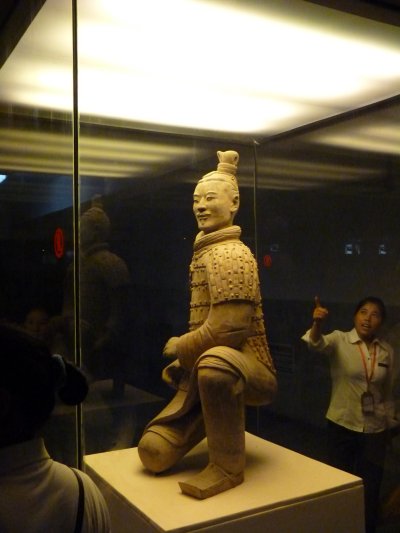
There's a minor dispute with the Greeks as to who created the first free standing statues.
The Greeks carved from solid stone. The terracotta army was manufactured with solid legs and hollow everything else.
Part of the marvel to me is the manufacturing process which created each warrior and animal as an individual.
Apparently the bodies, heads, and arms of coiled earth, joined with strips of clay are built on the solid legs.
A fine clay cover is added for detail to be carved.
Ears and other protruding bits, like moustaches, were then added.
Fire at a high temperature. No kilns have been found and the current belief is that they were temporary affairs built around each figure.
Not sure where the colour was added. Before or after firing.
One of the features of the statues is that they are all different. I can't help wondering about the chicken and the egg - was the manufacturing process designed deliberately to make them all different, or are they different because of an accident of the manufacturing process. Nice either way.
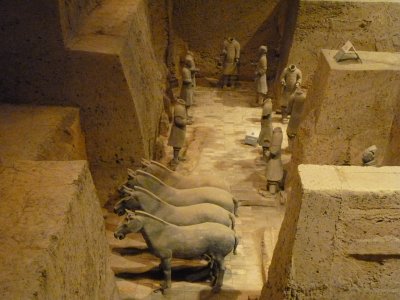
This is the "command bunker". Number 3 pit.
Officers having a meeting?
The four horses were connected to a chariot. The head of a charioteer is just visible. The chariot has disappeared though a couple of bronze chariots have been found.

It contains the majority of the army (and the majority of our fellow tourists).
These figures are close to a few people with desks working to restore them.
I vascillated between being reminded of dressmakers dummies with incomplete clothes pinned or tacked, and some sort of Frankensteinian monster construction.
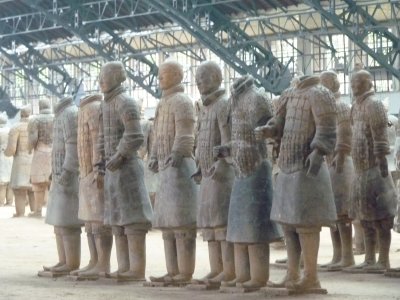
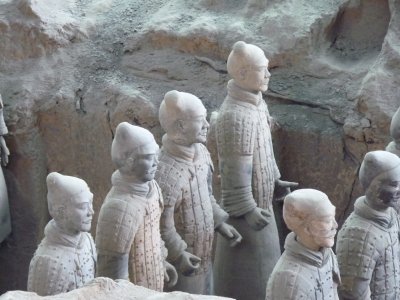
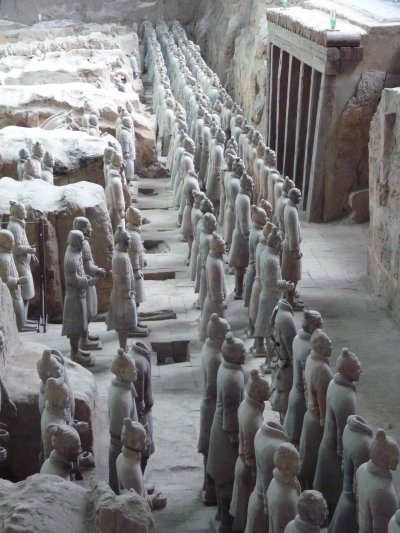
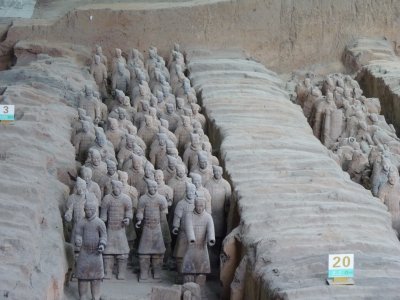
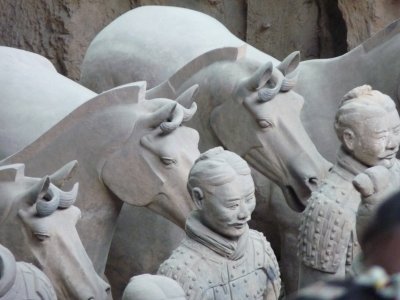
Being led by cavalrymen.
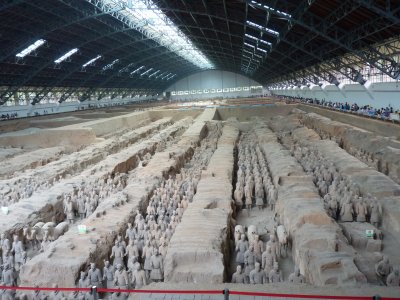
From earlier blog pages everyone will remember that the Qin Dynasty was from 221 BCE - 206 BCE.
On a serious note. The Shaanxi Historic Museum was a nice introduction to the broader history that spawned Qinshihuang.
We didn't visit his mausoleum. Still a mound of unexcavated earth. When it is found and excavated it will hopefully be extraordinary in a similar way to Tutenkhamen.
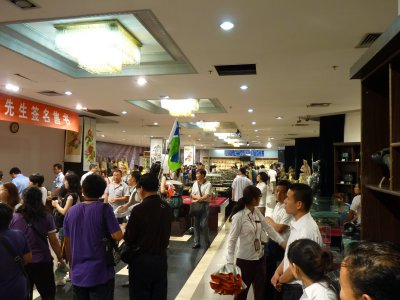
The pretext was that we may see the farmer who discovered the warriors while digging a well.
He's now 76 and turns up for paid photos and signatures.
Our preference would have been for more about the warriors and the culture of the time than the discovery and process of excavation.
A fascinating day out.